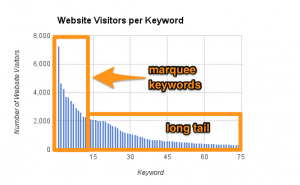Project managers need to carefully oversee every stage of every project from beginning to end. They must understand the unique lifecycle of each project and implement the right methodology to handle it.
There are plenty of different types of methodologies for project management. What is the best methodology for your team? One project manager may find the best methodology for one project may not be the right one for another.
Here is an overview of some of the top project management methodologies, along with their benefits and drawbacks.
Waterfall
The Waterfall methodology is a much more centralized approach to project management. Project managers take a much more proactive role to set the framework of the project in advance. They must make sure that all requirements are thoroughly outlined to avoid having them missed later.
Here is an overview of the Waterfall methodology template:
- The project requirements are clearly outlined.
- The framework of the project is designed.
- The project processes are implemented.
- The outcomes of the tasks are tested.
- The team begins maintenance duties.
The waterfall methodology is superior to many others for projects that are highly complex and resource intensive. It can also be ideal for team members with less autonomy.
Kanban
The Kanban methodology has several features that make it efficient for project management:
- It focuses extensively on leanness and the efficient allocation of resources.
- It requires transparency between all team members.
- It creates a very narrow workflow, so every team member has a limited number of tasks at a time.
There are several reasons that the Kanban approach works so well. One of the biggest reasons is that it eliminates unnecessary waste from unintentional redundancy. Creating an easy to follow workflow will also make it easier for team members to conceptualize the process.
The Kanban methodology is highly effective for simpler projects with highly specialized team members. It’s applicability is more limited with smaller teams with more generalized skill sets or incredibly complex projects that require greater level of multitasking.
Agile
Agile has been one of the top project management solutions in the software industry for nearly 20 years. The methodology has since been expanded to other industries. Marketing is one field that relies heavily on Agile project management software. Many construction companies have also started using the Agile methodology.
Agile’s unique framework is both its biggest strength for some applications and biggest limitation for other projects. It is a methodology that depends on progressive, incremental steps. This makes it very intuitive for many types of projects, such as software engineering and marketing. The potential downside of this approach is that organization have to be highly organized with a central communication channel that allows for speed and clarity around each task.
For example, Airbnb’s creative production team uses the agile framework to scale production and help the company expand into new markets. This framework allowed their team to scale their Trip Experiences offering across 50 new cities but created some strain on the team, which at the time, was relying upon spreadsheets to manage their projects. Challenges arose whenever communication broke down and managers had limited visibility into who was responsible for each task. As Airbnb’s Creative Production Manager Hoon Kim explains, “It was constantly crashing. People ended up creating duplicates of the doc to deal with their own small world of data, which quickly became outdated since they weren’t connected to the original doc. There were massive amounts of confusion.” They found that Wrike project management solution allowed the team to still deploy sprints while providing seamless communication and task management in single workspace.
Unfortunately, this methodology is not ideal for certain projects that require extensive trial and error or projects that may require the team to refer to previous stages in the project. According to the Project Management Institute, Agile isn’t the best platform for physical product development. However, a modified Agile methodology could be effective if properly implemented in the future.
“The investigation covered 19 medium-sized and large-sized companies that are parts of the program of the Center of Reference on Innovation, of the Innovation Center at Fundação Dom Cabral (FDC CRI-Minas, Brazil). A characteristic these companies share is their experience in new product development and the fact that they do not yet formally recognize the use of APM methods. The option to study new product development projects is due to similarities with the projects from the software industry, such as creativity and the development characterized by continuous cycles of prototyping and testing,” writes Edivandro Carlos Conforto and his colleagues at the PMI.
Business & Finance Articles on Business 2 Community(34)







